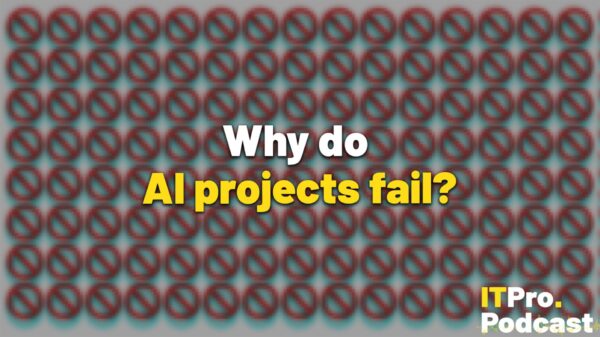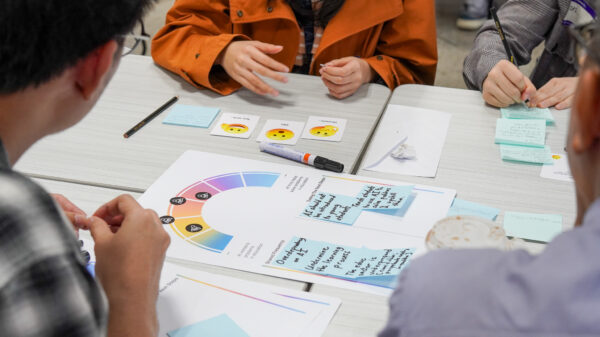The California State Board of Education has approved HMH’s “Into Math California,” an adaptive learning program designed for K-8 students. This initiative aims to integrate certain artificial intelligence models to enhance students’ learning experiences in mathematics.
According to HMH, the Into Math California program is research-based and tailored to support both educators and students. Jim O’Neill, President of Core and Supplemental Solutions at HMH, remarked, “The State Board of Education’s approval of Into Math California affirms HMH’s commitment to delivering high-quality curriculum materials that create real growth for students and champion educators in their critical work.” He emphasized that the program aims to provide every student with meaningful, hands-on learning experiences that build confidence in mathematics.
While the primary focus is on math, the program also incorporates language support for non-English speakers, addressing the needs of the approximately 33% of California’s K-12 students who are not fluent in English upon starting school. Peter Relan, chairman of Math GPT.AI, noted, “Math, in some sense, is a universal language… And so to some extent, you could argue that math can be taught regardless of the native language.”
Innovative Use of AI
The term ‘AI’ often evokes thoughts of generative models like ChatGPT or Google Gemini, but HMH’s approach is rooted in traditional AI methodologies. Their program utilizes a tool called Waggle, which offers personalized adaptive learning solutions. Relan explained, “Personalized in that case, means, how do I understand? What is it that you struggle with and then, how do I then adapt my teaching to you?” This targeted learning approach allows educators to tailor their instruction to individual student needs.
Ken Koedinger, a computer science professor at Carnegie Mellon University, elaborated on Waggle’s capabilities, stating, “Looking at Waggle’s skill-based artificial intelligence engine provides targeted practice to drive mastery.” This technology identifies students’ strengths and weaknesses, enabling more effective learning strategies.
Students are evidently drawn to technology, and recent surveys indicate that 86% of students are now integrating AI into their studies. Mark Warschauer, a distinguished professor of education at UC-Irvine, highlighted the benefits of AI in education, noting its effectiveness in helping students learn vocabulary and content through interactive dialogue, particularly for English learners.
Addressing Concerns and Challenges
Despite the positive outlook, some concerns persist regarding screen time and the potential for cheating. Relan referred to the surge in AI-related cheating as “a pandemic,” while emphasizing that his Math GPT.AI tool encourages critical thinking without providing direct answers. This approach aims to promote deeper understanding rather than mere rote learning.
Koedinger addressed the balance between screen time and effective learning, stating, “I think there’s concerns about screen time, but… just because it’s different, doesn’t necessarily mean it’s bad.” The imperative, however, is to ensure that any generative AI, such as ChatGPT, maintains mathematical accuracy, as it has been known to struggle in this area.
California’s decision to implement such an innovative program comes in response to its ranking in the bottom half of the nation for student math scores. Data from the University of California, San Diego reveals a concerning trend: students entering college often lack sufficient math preparedness. Relan emphasizes the importance of addressing these foundational skills early, remarking, “So, you work backwards from that, and you say, ‘well, then by the time you come into ninth grade, we better have K-8 math education.’”
As AI continues to play a larger role in education, both students and educators stand to benefit from the interactive and adaptive learning experiences it can offer. Warschauer adds, “I think that students in grade K through 12 need the kind of interaction support that comes from working with teachers, but a teacher isn’t available to talk to every student, 24/7, individually.” AI’s supplemental role in education is poised to grow, providing a vital resource for learners.
As other states observe California’s pioneering efforts in merging AI with educational practices, the potential for a nationwide trend in adaptive learning is on the horizon. Relan stated, “I expect other states to be watching carefully. And this is a whole new world we’re about to enter.”
 Delhi’s Education Minister Sood Announces AI-Enabled Transformation for Govt Schools
Delhi’s Education Minister Sood Announces AI-Enabled Transformation for Govt Schools Sunway University Partners with Elitery to Advance AI in Education through MoU
Sunway University Partners with Elitery to Advance AI in Education through MoU Ateneo SALT & RIFE Host ‘Humans in the Loop’ Event on GenAI in Education
Ateneo SALT & RIFE Host ‘Humans in the Loop’ Event on GenAI in Education Abu Dhabi Chamber Hosts AI Education Conference to Align with UAE’s National Strategy
Abu Dhabi Chamber Hosts AI Education Conference to Align with UAE’s National Strategy Andrew Ng Advocates for Coding Skills Amid AI Evolution in Tech
Andrew Ng Advocates for Coding Skills Amid AI Evolution in Tech

























































